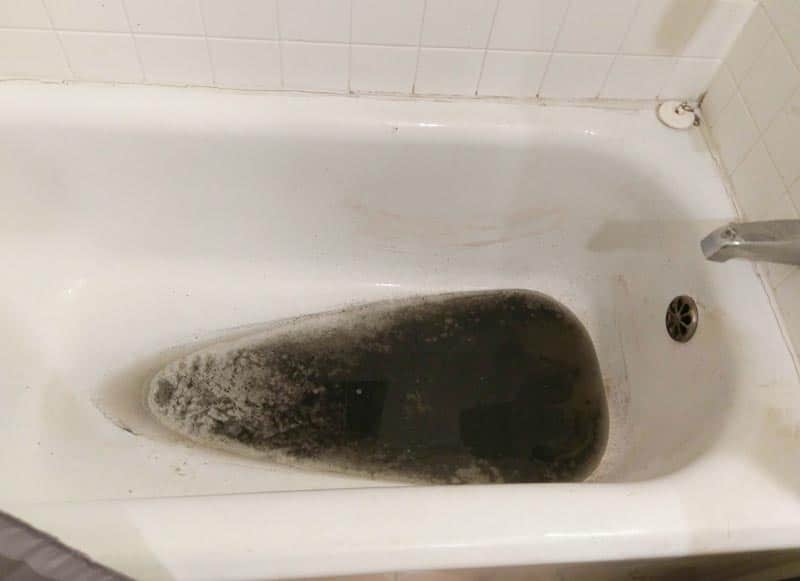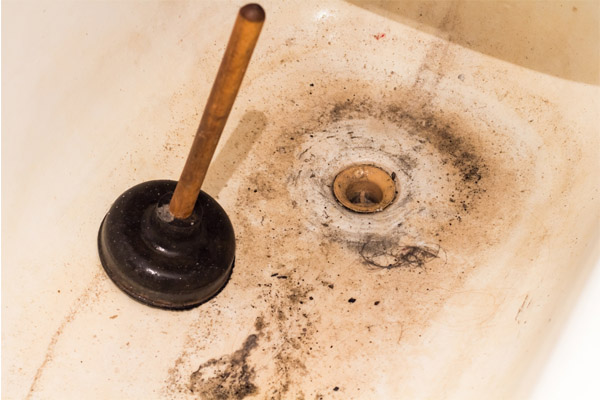Understanding the Causes of Waste Backflow in the Bathtub
Understanding the Causes of Waste Backflow in the Bathtub
Blog Article
Are you hunting for insight involving What to Do if Sewage Starts Coming Up Through Your Bathtub?

Sewer backup in the bathtub can be a traumatic and unsanitary problem for any kind of house owner. Not only is it bothersome, but it also positions major wellness risks and suggests underlying concerns with the plumbing system. Understanding why sewer is turning up with the tub is important for taking ideal activity to resolve the trouble effectively.
Introduction to the Issue
Typical Reasons for Sewer Backup
Clogs in the Sewer Line
Among one of the most typical sources of sewer back-up is a blockage in the sewage system line. This can occur because of the buildup of debris, oil, or international things in the pipes, avoiding appropriate flow and creating sewer to support into your bath tub.
Tree Root Breach
Tree roots seeking dampness and nutrients can penetrate drain lines through little cracks or joints. In time, these roots can grow and increase, triggering substantial damages to the pipes and resulting in sewage backup problems.
Comprehending the Issue
When sewage starts backing up right into the bath tub, it's a clear sign of a problem with the drainage system. The wastewater that needs to be flowing far from your home is rather locating its back right into your space, which can lead to substantial damages and carcinogen.
Possible Causes
A number of factors can contribute to sewer back-up in the bathtub. From clogs in the sewer line to problems with the plumbing framework, recognizing the origin is crucial for finding a remedy.
Aging Facilities
Older homes might have dated plumbing systems that are a lot more at risk to deterioration, fractures, and wear and tear. As pipes age, they come to be much more prone to leakages and clogs, boosting the probability of sewer backup cases.
Heavy Rainfall or Flooding
Throughout periods of heavy rainfall or flooding, the drain system may come to be overwhelmed with excess water, causing back-ups and overflows. This can result in sewer supporting into bathtubs and various other fixtures inside the home.
Signs of Sewage Backup
Foul Odors
Undesirable odors emanating from drains pipes or fixtures, especially in the restroom, might show sewer backup concerns. These smells are frequently solid and consistent, signaling an issue that calls for prompt attention.
Slow Draining Fixtures
Tubs, sinks, and toilets that drain gradually or otherwise whatsoever could be experiencing sewer back-up. If several fixtures are influenced at the same time, it's likely that the concern originates from a common point, such as the primary sewer line.
Gurgling Sounds
Strange gurgling or bubbling noises coming from drains pipes when water is running somewhere else in your house are indicative of air caught in the plumbing system. This air buildup can result from sewer back-up and need to be examined promptly.
Health And Wellness Risks Connected With Sewer Backup
Contamination of Water Supply
Sewer backup can contaminate the water supply in your house, posturing a severe health and wellness danger to you and your family. Direct exposure to contaminated water can bring about gastrointestinal concerns, skin infections, and various other diseases.
Mold and mildew Development
Dampness from sewer back-up can produce suitable conditions for mold and mildew growth in your home. Mold spores can worsen respiratory system issues and trigger allergic reactions in delicate individuals, making punctual clean-up important.
Spread of Illness
Sewer has unsafe microorganisms, infections, and parasites that can cause a range of illness, including hepatitis, cholera, and gastroenteritis. Entering into contact with sewer or contaminated surface areas places you in jeopardy of infection.
Tidying up After Sewage Back-up
Disinfection Procedures
Completely disinfect and sanitize impacted locations after sewage backup to get rid of damaging germs and prevent mold and mildew development. Use appropriate cleaning items and safety equipment to guarantee safe and effective cleaning.
Restoration of Affected Locations
Fix any damages to floor covering, walls, or fixtures caused by sewage back-up. Relying on the level of the damage, you may need to change carpeting, drywall, or various other materials to recover your home to its pre-loss problem.
Immediate Actions to Take
Switching Off Water
In case of sewage backup, it's necessary to switch off the water system to avoid more contamination and damages. Situate the major water shutoff valve in your house and closed it off until the concern can be dealt with.
Getting In Touch With a Professional Plumber
Handling sewage back-up is not a DIY work. Call a licensed plumber with experience in taking care of sewage-related issues to assess the situation and execute required repairs or cleanings.
Staying Clear Of Contact with Contaminated Water
Till the sewer back-up is solved, prevent contact with infected water to prevent the spread of bacteria and pathogens. Put on protective equipment if you have to be in the afflicted area and wash your hands thoroughly afterward.
Safety nets
Routine Upkeep of Sewer Lines
Schedule routine evaluations and maintenance of your sewer lines to recognize and deal with possible concerns before they rise right into major problems. This can include cleaning out debris, inspecting for tree root intrusion, and fixing any type of broken pipes.
Mounting Bayou Shutoffs
Think about mounting bayou shutoffs in your plumbing system to prevent sewage from receding into your home throughout periods of heavy rainfall or flooding. These valves instantly close when water starts backing up, shielding your residential property from contamination.
Correct Disposal of House Waste
Avoid flushing anything apart from toilet paper and human waste down the commode to avoid clogs and clogs in the drain line. Dispose of oil, oil, and various other family chemicals correctly to lessen the threat of plumbing troubles.
Why Is Water Backing Up in My Bathtub When I Flush My Toilet?
What to do about a sewer line clog
First, don’t bother with plunging. No amount of plunging will dislodge the clog in a sewer line. The clog is too far away. Plungers are for clogs in the toilet itself, not the sewer line. Plus, the most likely causes of a sewer clog are:
Tree roots Flushed toys or feminine products Grease buildup Those items don’t move easily. And in the case of tree roots, the roots need to be cut out of the pipe and the pipe will need to be repaired.
You’ll need a closet auger. A closet auger is a type of plumber’s snake with a protective cover to keep from scratching the delicate porcelain toilet. If the clog is further down, you may need to remove the toilet or use one of your cleanouts to get to the clog.
We also recommend doing a video inspection of the drain to ensure that the cause of the clog has been completely removed. Otherwise, you could have the same problem again in a few days or weeks.
https://mspplumbingheatingair.com/blog/why-is-water-backing-up-in-my-bathtub-when-i-flush-my-toilet

Do you like reading up on Why is There Sewage Coming Up Through the Bathtub? Try to leave a remark directly below. We will be happy to find out your thinking about this blog entry. We are looking forward that you visit us again soon. In case you enjoyed our post plz consider to pass it around. Thank you so much for your time invested reading it.
Get Estimate
Report this page